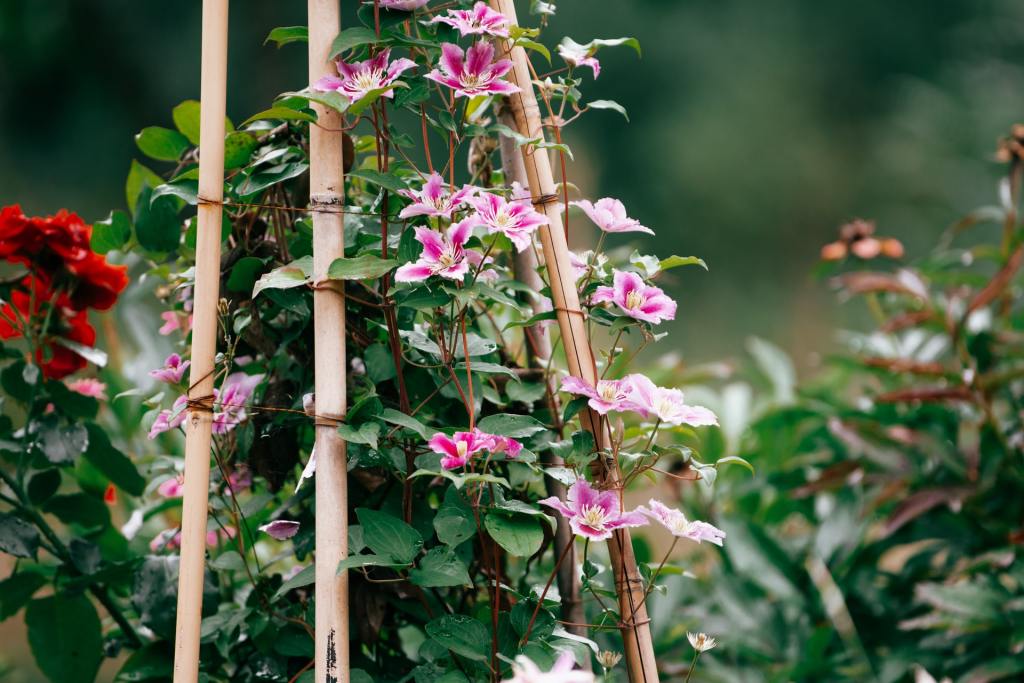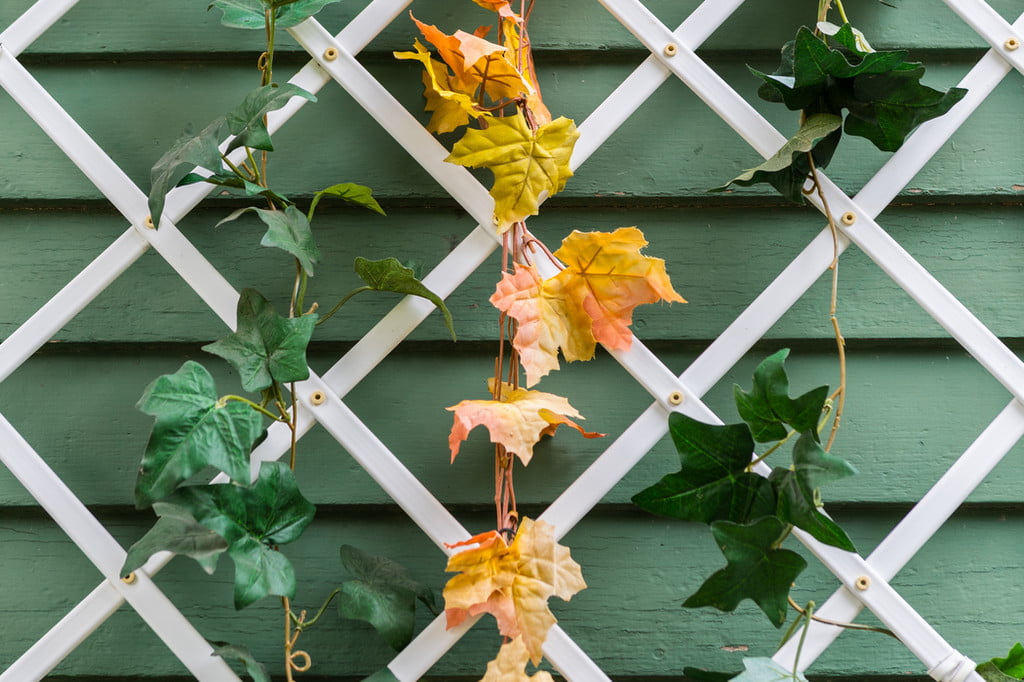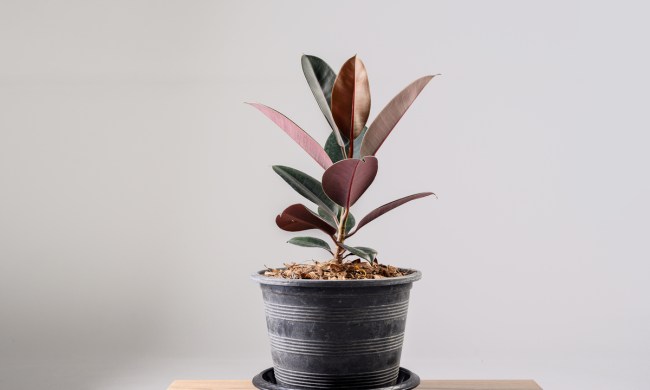Gardeners can have a love-hate relationship with climbing vine plants. They’re often some of the most beautiful and magical-looking plants in our collection, but they can be the most challenging and the most demanding plants to care for.
It doesn’t matter if they are flowering plants in your landscape, vegetable plants in your garden, or draping houseplants that add just the right amount of green to your home — they’re all lovely, and they’re all difficult. So here we’re going to talk about some of the most popular plants that will climb on a trellis, why growing them this way is best for them, and lastly, how to train your plant to grow on a trellis.
There’s a list a mile long of the plants that’ll vine up or across a trellis, but some of the most popular ones are clematis, blue moon wisteria, climbing roses, cucumbers, pole beans, pothos, and string of pearls. You probably already know if you have one within your collection, but if you’re looking to add to it, there are many sources where you can find a complete list of vining plants for almost any need or situation.

Why a trellis will benefit vining plants
For the most part, vining plants want to climb, but there are specific conditions that some plants might need. Unfortunately, our homes, gardens, and landscapes rarely have these conditions naturally, so they must be produced artificially to help these plant vines in the way that they want. Encouraging plants to vine and helping them do so will be better for the plant’s health in the long run and will result in the look or production you’re looking for.
For example, most cucumber varieties want to climb up something. If they don’t have a trellis or support of some kind, they’ll trail along the ground and grow that way. While this might not seem like a problem at first, it’ll quickly become apparent why it might be, when the trailing vines choke out other plants in the garden, and the forming cucumbers are overrun with insects and rot from laying on the ground.
It’s also true that cucumbers formed while hanging from the vine are more evenly shaped, and cucumbers on the ground might become curved or deformed. This also goes for flowering plants. They’re more likely to succumb to disease or insects, and they won’t produce as many or have as luscious blooms if they’re left to vine along the ground.

How to train vines to grow on a trellis
With all of the downsides of not ensuring your vining plant has support, you might be worried about keeping them from meeting this fate. Luckily, training vines for most plants is pretty simple, easy, and affordable. Almost anything can be used as a trellis, and you can build your own with materials you already have or make it easier on yourself and order one online. No matter which route you take, it’s essential to consider the type of trellis best for the kind of plant you have.
Step 1: Make or use a thinner trellis made of netting to support plants that reach out with small vines that wrap around anything they touch, such as the cucumber plant.
Step 2: Make or use a moss pole or wooden trellis for plants like pothos, which send out tiny "fingers" that look like hairs. These types of plants will prefer moss poles or trellis made of wood where they can grab on and have some grip.
Step 3: You can use PVC pipes, old chicken wire, or nails and screws with some twine for other plants.

Setting up a trellis
Whichever type of trellis you choose, it’s essential to get the setup in place before the plant gets too big. Once the plant is a certain size, it will quickly become unruly, and you might have to do some pruning and chopping to get it to come back in line.
Step 1: Start the training process when plants are still young and malleable.
Step 2: Watch the plant to ensure it's trailing properly. Prune and adjust the plant as necessary to get it back on track.

Training vines to climb
The vines already know what to do, so the phrase “training a vine” is a little silly; what we actually mean is helping the vine to climb in the way we want them to. All this takes is time and consistent checking.
Step 1: Once the plant is sending out vines and reaching, attach the vines to the trellis with twine, garden tape, or even old shoe strings. Whatever you have around the house is fine as long as it’s soft and won’t cut into the vine.
Step 2: Tie the reaching vine onto the trellis and repeat that process as the plant grows. Eventually, the plant will keep reaching up, and you might only have to tie off vines here and there.
Vining plants are a great way to add a vertical or horizontal element to your garden or home, and many of our favorite foods come from vining plants. Learning to care for a vining plant to let it live its best life will ensure you have a happy and healthy plant for years to come.



